Research Symposium
22nd annual Undergraduate Research Symposium
Jeffrey Sims Poster Session 6: 2:30 - 3:15/Poster #40
BIO
Future attorney and lifelong humanitarian. I am currently a student at Florida State University with dreams of attending law school after graduation. My experience in public interest law firms has brought my attention to cases involving employment discrimination and civil rights violations.
I plan to graduate with a Bachelor's degree in Economics and a minor in Finance. These concentrations have provided invaluable insight into the economic and financial crises that many individuals are suffering through. I hope that, through my hard-work and acquisition of a J.D. ,I will be able to use my knowledge and resources to make a real difference in peoples lives.
Learning a Second Language Unconsciously
Authors: Jeffrey Sims, Shaofeng Li, Ph.D.Student Major: Economics
Mentor: Shaofeng Li, Ph.D.
Mentor's Department: Department of Modern Language Mentor's College: College of Language Co-Presenters: Allie Cordero, Cory Burns, Luis Wong Chen, Gabi Zernik, Carson Long, Jeffrey Sims,
Abstract
The purpose of this study is to assess the bearing of 3 different implicit language aptitude scores [LLAMAD, Artificial Grammar (AG), and Passive Priming (p)] on L2 speech performance. It was hypothesized that all three of these implicit aptitude scores would have significant positive correlations with L2 speech performance. 250 speech samples were recorded by Chinese college student English-L2 learners and rated on comprehensibility and accentedness. The averaged ratings were then compared to the students’ corresponding LLAMAD-, AG- and p-scores resulting from separate tests. It was found that LLAMAD-scores had a significant positive correlation, AG-scores had no significant correlation, and p-scores had a significant negative correlation with L2 speech performance. These results have a bearing on L2 education at large; L2 education traditionally centers on conscious (explicit) language-learning and scholars have called into question the exclusion of unconscious (implicit) language-learning. This data suggests conflicting support for the inclusion of unconscious language-learning streams into L2 curriculum.
Keywords: Language, Foreign, Speech, Quantitative, English
22nd annual Undergraduate Research Symposium
Alexis Sanders Poster Session 2: 10:00-10:45/Poster #57
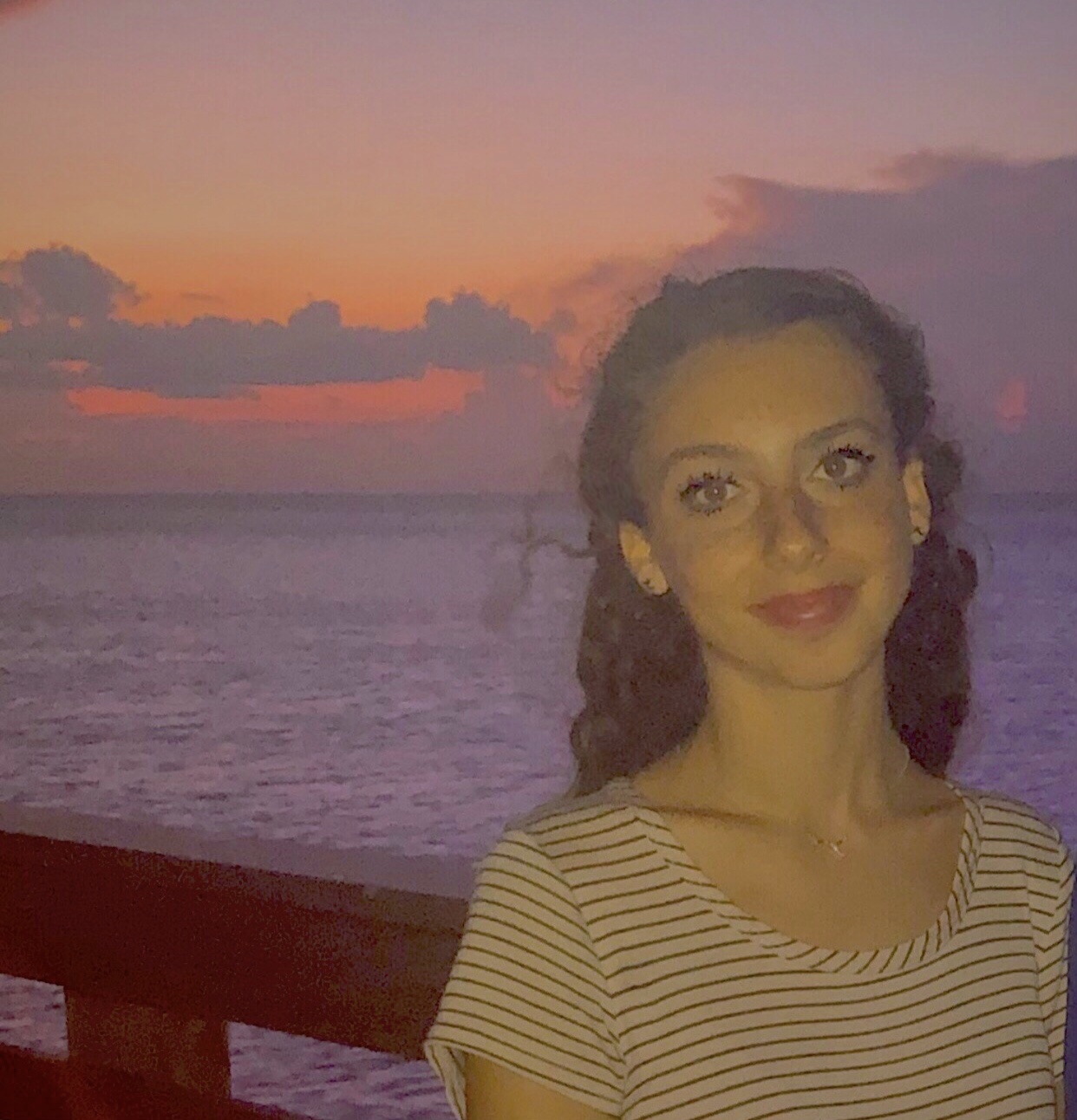
BIO
I am currently pursuing a Biological Sciences degree at Florida State University on the marine biology academic pathway. Over the summer in my hometown of Sarasota/Venice, Florida, I interned at the Mote Marine Laboratory, working with multiple land and aquatic turtle species. This academic year I have been volunteering and participating in research at the Florida State Marine and Coastal Laboratory. I plan to obtain another internship position this coming summer at the Mote Marine Laboratory and am looking for environmental/marine biology research opportunities at Florida State University for the coming fall term.
A Review of Research Pertaining to Gorgonian Octocorals off the Gulf of Mexico
Authors: Alexis Sanders, Rachael BestStudent Major: Biological Sciences
Mentor: Rachael Best
Mentor's Department: Department of Biological Science Mentor's College: Florida State University Co-Presenters: n/a
Abstract
The Gulf of Mexico is made up of primarily limestone reefs,
where gorgonian octocorals are one of the most prominent
organisms that contribute to habitat formation. Gorgonian
octocorals make up highly diverse communities, yet it is
evident that few ecological studies have been conducted on
their species in the Gulf of Mexico. This gap in research is
predominantly due to the difficulty of species identification in
the field, causing a lack of monitoring efforts pertaining to this
group of organisms. Despite this, there is an increasing effort to
understand this diverse and widely distributed taxon due to
their role as habit-forming organisms and potential reliance
under global change. Within this literature review, we delve
into an array of ecological, morphological, distributional, and
taxonomical research pertaining to gorgonian octocorals
throughout the Gulf of Mexico. This comprehensive review
will conceivably be used by researchers and scientists to
communicate knowledge, provide suggestions for prospective
work, and advocate for future imperative studies.
Keywords: Gorgonian, Octocorals, Gulf of Mexico
22nd annual Undergraduate Research Symposium
Makena Lang Poster Session 4: 12:30-1:15/Poster #5

BIO
I am a sophomore at Florida State University. I'm interested in environmental science, ecology, and biology. I enjoy hiking, volunteering, and spending time with my friends.
Meiofauna abundance and biomass in mangrove and marsh ecosystems along the Apalachicola Bay
Authors: Makena Lang, Jeroen IngelsStudent Major: Environment and Society
Mentor: Jeroen Ingels
Mentor's Department: FSU Coastal and Marine Lab Mentor's College: Office of Research Co-Presenters:
Abstract
Meiofauna are microscopic animals (63-500 µm) that are abundant and incredibly diverse in coastal and marine sediments worldwide. Their community composition, density, and biomass are acknowledged as ecological indicators of the environment they reside in; and they play pivotal roles in key environmental processes such as nutrient exchange and food-web flows. In this study we focused on free-living nematodes and copepods from mangrove and salt marsh systems in Apalachicola Bay. A total of twelve samples were taken with 60mL cut-off syringes in October 2022; three samples (1-2 feet apart) from the center of a Mangrove hammock and three samples on the fringe; the center and fringe samples were separated by a few meters. The same sampling design was followed for a nearby salt marsh. Samples were washed over stacked 500 and 63 µm sieves and meiofauna extracted using density separation. Nematodes and copepods were enumerated, picked out, and mounted on glass slides so that they could be measured under a compound microscope to calculate biomass. Nematode:copepod ratios, density, and biomass were analyzed to distinguish spatial patterns and differences between mangrove and marsh habitats, and the fringe sediments around these habitats. This information will provide a glimpse into the miniature life of coastal habitats in the Apalachicola Bay ecosystem, their ecology and their functional roles.
Keywords: marine science, ecology, meiofauna, environmental science, ecosystems
22nd annual Undergraduate Research Symposium
Alexander Sarmiento Poster Session 5: 1:30 - 2:15/Poster #8

BIO
My name is Alexander Sarmiento (pronounced sar-me-ento), and I am a first-year here at Florida State University pursuing the pre-med track. I was born and raised in Broward County, FL, and graduated from William T. McFatter high school, where I got certified as an Electrocardiograph technician and Patient Care technician. Since the second grade, I decided that I wanted to be involved in the medical field and have not looked back since then. My main motivations for pursuing this track revolve around my experiences with the poor living conditions and vast healthcare inequalities seen in third-world countries like Honduras, which is where my family is from. My ultimate goal is to be able to return to Honduras as an M.D. and provide essential medical services to rural and marginalized communities for free or at the lowest cost possible. I am very interested in the human body, helping marginalized communities, and improving and developing systems designed to improve the general quality of life.
Preparing for the next pandemic
Authors: Alexander Sarmiento, Dr. Joseph GrzywaczStudent Major: Biological Sciences
Mentor: Dr. Joseph Grzywacz
Mentor's Department: Human Development and Family Science Mentor's College: College of Health and Human Sciences Co-Presenters: Audrey Brenner, Anisa Gonzalez, Fiona Giardino, Ellia Giardino
Abstract
Preparing for the Next Pandemic is a public health research project dedicated to finding ways to improve the overall health of agricultural laborers, especially regarding disease response and prevention. The specific aim of this research is to provide potential recommendations to farmworker organizations that will lower mortality and morbidity of disease in the farmworker community
Keywords: Pandemics, COVID-19, farmworkers
22nd annual Undergraduate Research Symposium
Thamengie Richard Poster Session 5: 1:30-2:15/Poster #13
BIO
Hello, my name is Thamengie Richard. I am a 2nd-year psychology major and innovation minor at Florida State University. I was born in Port-au-Prince Haiti, but I spent a lot of my life in North Lauderdale, FL. I am currently involved in programs and clubs at FSU such as CARE, Alliance for Black Women, and the Black Student Union. My hobbies include dancing and journaling. Currently, my plan for after graduation is to go to graduate school and earn my masters in I-O psychology. In the future, I want to continue to do research that analyzes implicit bias, prejudice, and institutional racism.
An Analysis of Florida State Student Preferences and Biases when Selecting Tutors at ACE Learning Studio.
Authors: Thamengie Richard, Samantha TackettStudent Major: Psychology
Mentor: Samantha Tackett
Mentor's Department: Academic Center for Excellence Mentor's College: Education Co-Presenters:
Abstract
Biases and preferences are present during every conscious and unconscious decision made throughout the day. These preferences can be based on stereotypes or past experiences, and they are not always inherently negative. Students select whom they want to be their tutor based on various factors. In this study, we analyzed experienced tutors' perceptions of students' most important preferences when selecting a tutor. We conducted 30–45-minute interviews with tutors in the Academic Center for Excellence (N=4) to explore tutors' perceptions of their students' selection process and the potential impact of students' choices on their tutors. Data collection and analysis results show that tutors view race, ethnicity, gender, and primary language as relevant factors when selecting a tutor. Tutors also identified availability and personal recommendation as the primary factors; Availability was consistently rated as the highest priority factor among tutors. The data findings have implications for supporting increased enrollment diversity in STEM programs of study and increased diversity among the STEM tutors of institutional success centers. The results show the need for more education about personal and institutional biases such as racism, sexism, and monolingualism
Keywords: Implicit bias, Social psychology, psychology, tutor, bias,
22nd annual Undergraduate Research Symposium
Christian Caballero Poster Session 7: 3:30-4:15/Poster #39
BIO
My career goal for as long as I can remember has been to become a physician. I have always found satisfaction in serving others for the betterment of my community. Over the past two years I have worked as a public adjuster to access the damages of affected homes. Living in Florida, the majority of damages I am familiar seeing, are mold growth cases due to heavy rainfall or flooding. This research project aligns with my career goals perfectly by combining my knowledge on mold growth to my interests in human health. My aim for all future research projects, is to find answers in attempt to improve wellness in public health.
A review of flood impacts on human respiratory health
Authors: Christian Caballero , Ebrahim AhmadisharafStudent Major: Biological Sciences
Mentor: Ebrahim Ahmadisharaf
Mentor's Department: Department of Civil and Environmental Engineering Mentor's College: FAMU-FSU College of Engineering Co-Presenters:
Abstract
It is known that natural disasters such as flash floods can leave long lasting effects on buildings such as loose flooring, foundation cracks, “weak points” and premature roof failure. However, the human respiratory complications due to flooding and mold growth remain unstudied. A range of floods—small (nuisance) to extreme—can negatively affect human respiratory health, but extreme events like hurricanes often receive the sole attention. In this research, past studies related to floods, mold growth and respiratory health issues, were collected using a search relevance method and categorized to further analyze the dangers of persistent mold growth. The findings of these studies were then further analyzed to detect correlations between the effects of flooding on respiratory health. We also evaluated the trend of research on this topic over time and the geographic locations of past research. Our results showed that: (1) large floods like hurricanes have been the sole focus of past research; (2) there has been a growing interest in this research area over the past five years; and (3) Europe and North America have been the center of research on the impact of floods on the human respiratory health, while other parts of the world have not studied this research. The data collected will give us knowledge on how to address these trends to take progressive action in the remediation of affected homes and avoid negative respiratory health effects. We provided directions for the future research on flood impacts on human respiratory health.
Keywords: Flood* , Mold or Fungi , Health , Water Intrusion
22nd annual Undergraduate Research Symposium
Madison Klick Poster Session 6: 2:30 - 3:15/Poster #60
BIO
My name is Madison Klick and I am currently a freshman at Florida State University pursuing a double major in Criminology and Biological Science; I have also taken on two minors in Chemistry and Underwater Crime Scene Investigations. I grew up in Wilkes-Barre, Pennsylvania and moved to Melbourne, Florida in 2018 where I graduated high school with my Associates of Arts degree from Eastern Florida State College. While attending FSU, I have been fortunate enough to be accepted into UROP, where I was able to advance my experience in research and networking. Obtaining my Bachelor’s degree and beyond from Florida State University is going to open countless opportunities as I aspire to land a job as a forensic biologist and on-call crime scene diver. My hopes for the future is that a job as a diver will allow me to travel and heighten my understanding of the world and cultures around me.
The Effects of Shared Reading on the Geometry Vocabulary Knowledge of Preschool Children At Risk for Language Delays
Authors: Madison Klick, Taryn WadeStudent Major: Criminology/Biological Science
Mentor: Taryn Wade
Mentor's Department: School of Teacher Education Mentor's College: College of Education Co-Presenters: Skylar Ruffner
Abstract
The definitive purpose of this research study is to convey the effects of shared reading on the development of early mathematical vocabulary language skills in preschool-aged children at risk for language delays; in this study, language delays are defined as such: having difficulty learning new words, embedding fewer vocabulary words in their daily conversations, difficulty expressing thoughts and/or feelings, or difficulty understanding others in a similar learning environment (Noble et al., 2020; Saeed et al., 2018). The study focused upon the use of shared reading in the improvement of preschool mathematical domains, particularly geometric literacy, which included the analysis of shape concepts and spatial relations vocabulary. Shared interactive storybook readings and the application of diagnostic reading with geometric aspects will inspire newfound strategies, aiding in the analytical questioning phase of the intervention. The study will utilize three distinct phases - baseline, intervention, and maintenance. Knowledge of shape vocabulary will be predetermined before shared reading, a conclusive knowledge check will occur to determine the effectiveness of the shared reading strategy, and reestablishment of the intervention’s efficacy will be determined in respective order. These strategies will create exposure to new terms and opportunities for expanded comprehension and therefore will result in the prediction of a positive correlation with shared reading and vocabulary development and improvement.
Keywords: shared reading, geometry vocabulary, language delays, preschool, intervention
22nd annual Undergraduate Research Symposium
Maia Inman Poster Session 6: 2:30-3:15/Poster #68

BIO
My name is Maia Inman. I am originally from Arizona and spent several years in Michigan as well. I went to Highschool here in Tallahassee. I am a senior psychology student graduating this summer. I am interested in cognitive psychology and cognitive neuroscience and have been researching in these fields since sophomore year.
Retroactive change detection of novel objects with eye tracking and odor cue assistance
Authors: Maia Inman, Dr. Chris MartinStudent Major: Psychology
Mentor: Dr. Chris Martin
Mentor's Department: Psychology and Neuroscience Mentor's College: Arts and Sciences Co-Presenters:
Abstract
Processing what we see can be complex, partially because we can only attend to a limited amount of visual information at one time. When diverting attention away from a target or violating the participants expectations, researchers have demonstrated that a participant can fail to notice a change. This holds when even salient changes are made. This is referred to as change blindness. Currently we ask if visual changes not initially perceived can be detected retroactively based on the content of long-term memory. To test this, participants completed a three-stage experiment. In the first stage, we presented pictures of four novel multi-feature objects. In the second stage, objects were presented in either their original or changed form. Critically, a contextual odor cue was presented during this stage for half of participants. In a final stage, participants were shown the original objects from stage one in conjunction with the same odor cue. We predict that the association between the stage two objects and the odor cue will be strong enough to evoke retroactive change detection. Specifically, we anticipate that participants who did not notice the change that occurred between stage one and two will report this change retroactively during stage three due to the mismatch between the odor cue and presented objects. Participants who received the odor cue should have higher rates of retroactive detection than those that did not. These results would suggest that we can detect previously unseen visual changes in our environment by attending to information in memory.
Keywords: Memory, Cognitive, Psychology, Change Detection
22nd annual Undergraduate Research Symposium
Stephanie Carmenates Poster Session 3: 11:00- 11:45/Poster #10
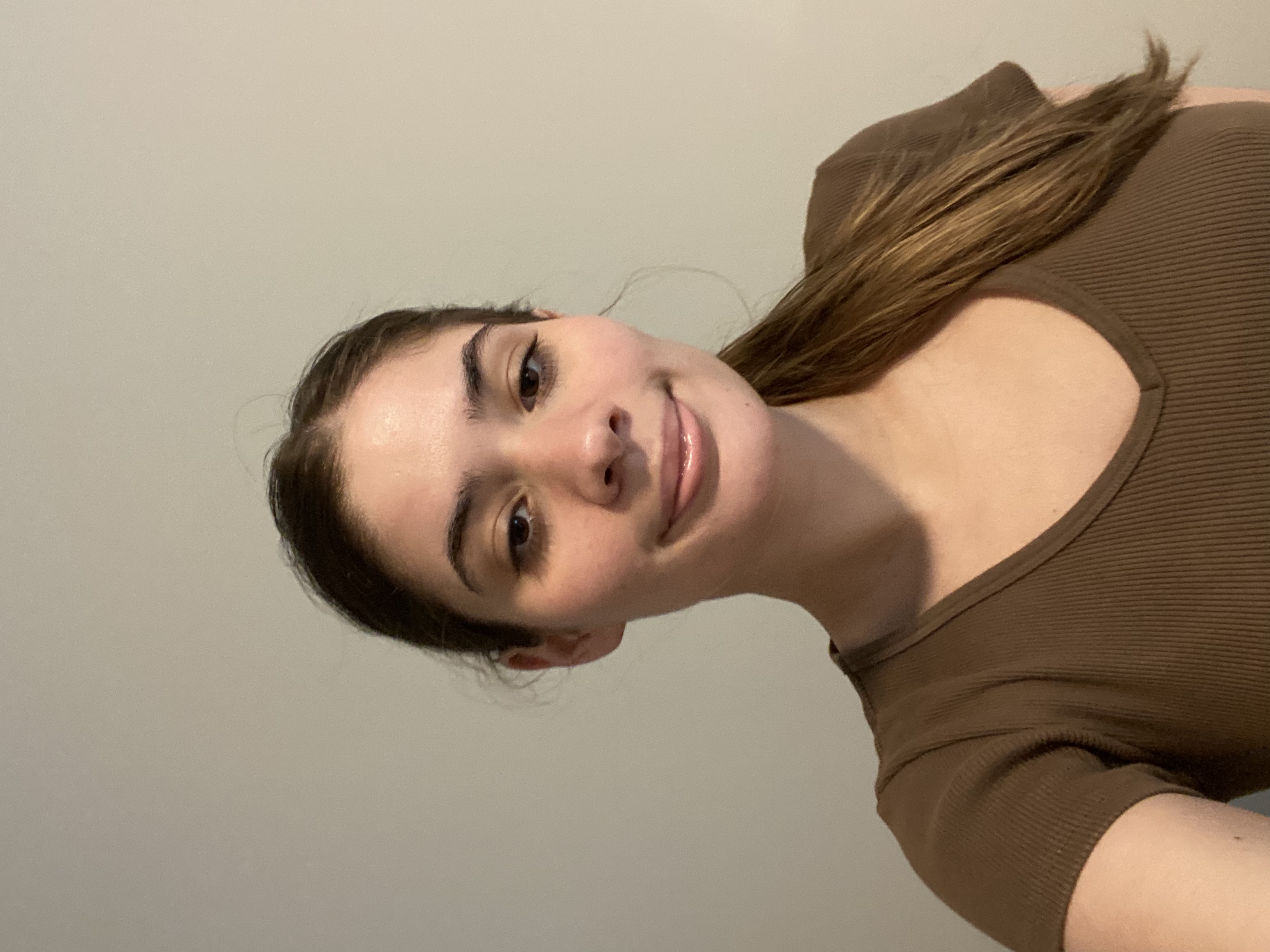
BIO
My name is Stephanie Carmenates and I am a Sophomore studying Biological Science at Florida State University. I am interested in pursuing the medical field, specifically dermatology. I am also interested in attending graduate school to pursue my PhD.
Social Media and Clinical Trial Recruitment for HIV/AIDS
Authors: Stephanie Carmenates, Dr. Zhe HeStudent Major: Biological Science
Mentor: Dr. Zhe He
Mentor's Department: EHealth Lab Mentor's College: School of Information Co-Presenters: Jessica Valyou, Neissa Philemon
Abstract
Clinical trials rely on the recruitment of participants, and social media could help attract and increase viable participants. Social media presents a unique opportunity for targeting specific groups (HIV positive and high risk) because applications like Facebook or Reddit have group features as well as easy sharing ability. Moreover, the algorithms of these types of apps curate posts and advertisements towards audiences with an invested interest. Thus,social media advertising is potentially more targeted than in-person methods of recruitment (posters, billboards, pliers, etc.). In order to collect information on effective strategies for social-media-based clinical trial recruitment, literature reviews were conducted on relevant articles that examined social media recruitment in a variety of study types focusing particularly on HIV studies. Other factors of social media such as demographics, marketing techniques, and cost effectiveness were collected and examined. Applications like Facebook, Reddit, and Instagram show a high potential for recruitment due to the relevant Facebook groups for HIV and the high percentage of 18–29-year-olds on Instagram. In addition, the cost-per click averages demonstrated Facebook, Instagram, and Twitter a higher price as opposed to dating or hook-up apps like Grindr. When utilizing social media for recruitment, a proper background check is required to avoid duplicate or fraudulent accounts. In addition, the campaign or advertisement should follow marketing strategies in order to maximize their effectiveness and lower the predicted cost per participant. Limitations of these platforms included: inability to reach individuals without accounts and in rural areas due to the app’s geological demographics.
Keywords: Clinical Trial, Recruitment, HIV/AIDS
22nd annual Undergraduate Research Symposium
Ayesha Swaich Poster Session 4: 12:30 - 1:15/Poster #2
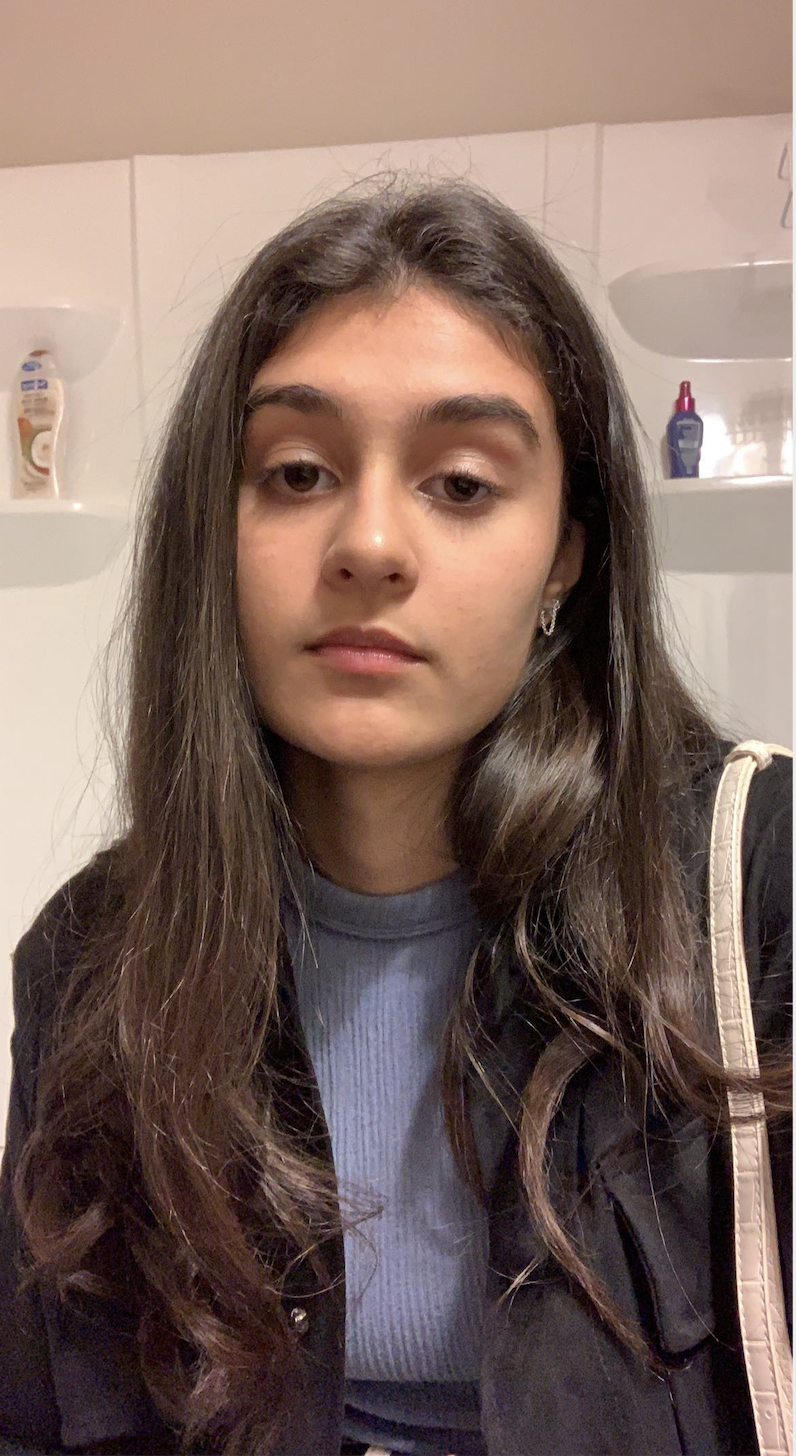
BIO
Hi my name is Ayesha Swaich, I am from Tampa, Florida. I have always had a fond interest in how social media can play a beneficial role in people's everyday lives, especially since there is such little research available. This is one of the many reasons why I chose this research project.
Networked Knowledge Activities on Social Media
Authors: Ayesha Swaich, Vanessa DennenStudent Major: Psychology
Mentor: Vanessa Dennen
Mentor's Department: College of education Mentor's College: Florida State University Co-Presenters: Allison Coppola
Abstract
In this research study, interviews were conducted throughout the student and faculty body of Florida State University. Participants were tested through a card sort that focused on how they as individuals receive and send information they are exposed to on social media, in order to answer the research question: How informative can social media be? The purpose of this study is to identify the benefits of social media specifically as an academic outlet, in hope that the result of this study will help eliminate the stigma social media currently has. Participants were interviewed in three sections, the first being how they use social media in an academic environment whether it be through professors and apps or their own online textbooks. The second part was the card sort that was broken up into three parts all focusing on the techniques and likelihood they see educational information on social media how often they choose to send it.Lastly, the last part focused on areas participants struggled in to allow researchers to have a better understanding of the limitations of their study and where they can improve for future research. Though data is still being gathered, from what is known through the interview process the majority of participants, though find useful and informational ideas from social media, are not as open to sharing the information with others they do not know well, compared to many communicating and sharing ideas with people close to them.
Keywords: Social Media, Academics, beneficial
22nd annual Undergraduate Research Symposium
Sydney Harnage Poster Session 1: 9:00 - 9:45/ Poster #38

BIO
I am a junior majoring in Editing, Writing, and Media and I am also pursuing a minor in Spanish. I would someday like to go into publishing or teaching English as a second language.
Latinx Shakespeares
Authors: Sydney Harnage, Dr. Carla Della GattaStudent Major: Editing, Writing, and Media
Mentor: Dr. Carla Della Gatta
Mentor's Department: Department of English Mentor's College: College of Arts and Sciences Co-Presenters: Melanie Leon
Abstract
Latinx Shakespeares productions have been largely undertheorized throughout history despite their cultural significance and prevalence throughout numerous communities. To make this archive of Latinx Shakespearean productions available, this project utilizes data gathered by Dr. Della Gatta. Organizing the research conducted on various Latinx themes in Shakespearean adaptations, the relationship between Shakespeare and Latinx culture, and the impact of the “West Side Story Effect” results in an increase in the amount of information regarding Latinx Shakespeareas that is available to the general public. The following research aims to compose an easily accessible database of Latinx Shakespearean productions, while providing insight into their importance, unique qualities, and impacts on communities around the country.
Keywords: Shakespeare, Latinx, Database
22nd annual Undergraduate Research Symposium
Jesse Thomas Poster Session 2: 10:00-10:45/Poster #59
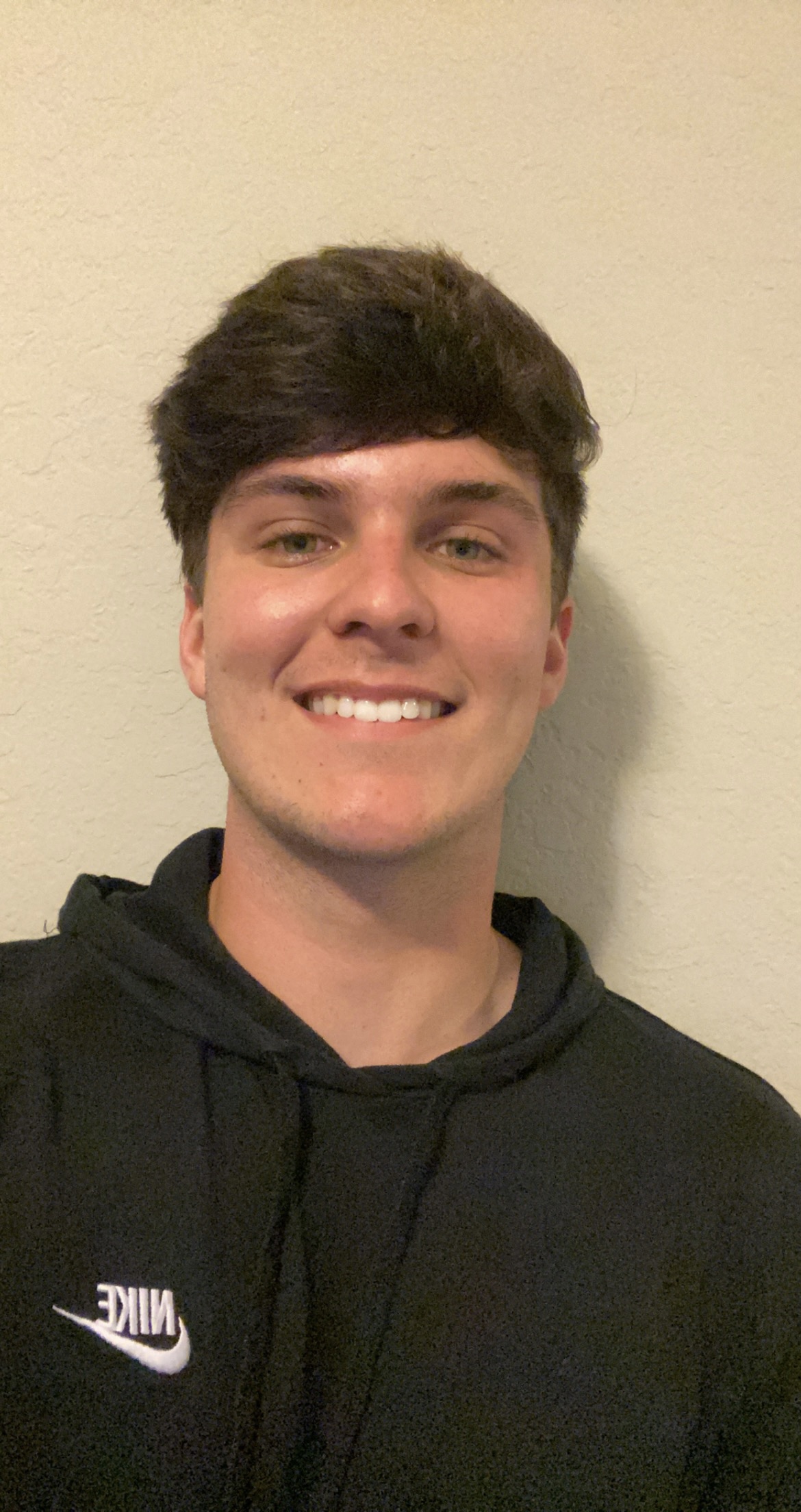
BIO
Hello, my name is Jesse Thomas. I am a second-year student here at FSU majoring in biological sciences with an interest in the health field. I have a younger sister playing college softball and a dog named bear I took with me to college. I am from Crystal River, Florida so I spend a lot of time outside and on the water. Much like my research which is near Saint James Island at the FSU Coastal and Marine Lab, my personal interests drove me to pursue this field of research and I enjoyed it greatly.
Chemical Analysis on Local Source Vegetation and soils in the Apalachicola Region
Authors: Jesse Thomas, Josh BreithauptStudent Major: Biological Sciences
Mentor: Josh Breithaupt
Mentor's Department: Coastal and Estuarine Biogeochemistry Mentor's College: Arts and Sciences Co-Presenters:
Abstract
The importance of analyzing coastal environments around the Apalachicola region has become increasingly important to researchers. My project's goal is to analyze how ratios of carbon:nitrogen: organic matter varies between local source vegetation and local soils and draw conclusions based on that data. We will be looking at soil core samples. Our vegetations of interest are Red Mangroves, Black Mangroves, Juncus, Spartina, Batis, and, Salicornia. Data was collected by ourselves, we obtained our own samples for processing, using plastic 30 centimeter PVC pipe. Cores were stored in the fridge, separated by root size, and then freeze-dried. One method we will use is analyzing organic matter using Loss on Ignition which is burning samples in ceramic crucibles in a furnace at 550 degrees Celcius. The other method is performing elemental analysis on a machine called the ELMO. Samples are wrapped in tin boats carrying the sample and then loaded into the machine to run. This machine will give us data about chemical compositions for each individual sample. The findings of my experiment are preliminary at the moment because I am still in the process of analyzing all of the samples we have collected at the lab. I found that dead mass for all of the cores had a significantly higher carbon to nitrogen ratio compared to live mass samples. PCJ2 (Juncus) has the highest C:N ratio, the influx of dead mass influences this.
Keywords: Vegetation, Soil, Carbon, Nitrogen
22nd annual Undergraduate Research Symposium
Whitney Malcolm Poster Session 4: 12:30-1:15/Poster #9
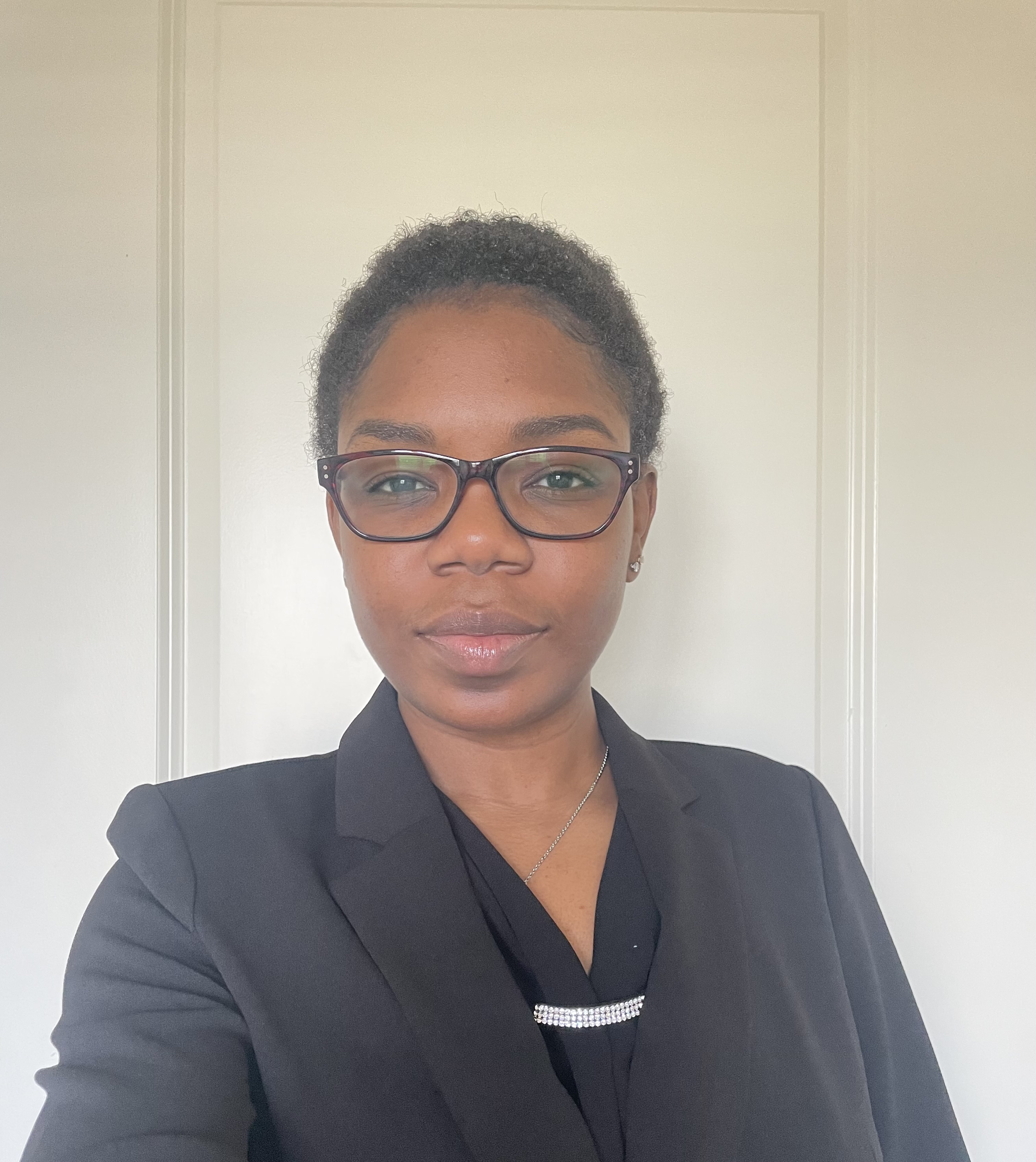
BIO
I am a junior in the criminology program with aspirations of becoming a lawyer. In my down time I like to cook, and watch crime tv shows. I chose to research financial literacy because it is something that I myself struggle with and other college students. I wanted to assess whether learning how to effectively manage money translates to being financial literacy.
College Student’s Money Management Skills: A survey Of Florida State University Students
Authors: Whitney Malcolm, Dr. Crystal TaylorStudent Major: criminology
Mentor: Dr. Crystal Taylor
Mentor's Department: Urban Planning Mentor's College: COLLEGE OF SOCIAL SCIENCES & PUBLIC POLICY Co-Presenters:
Abstract
Approximately, 1 in every 10 Americans report that they are not fully confident in their ability to make good financial decisions (National Foundation for Credit Counseling). After the fourth quarter of 2020, student loan debt was about $1.46 trillion averaging to about $38,792 per student (debt.org 2021). The President's Advisory Council defines financial literacy as "the ability to use knowledge and skills to manage financial resources effectively for a lifetime of financial well-being" (2008 Annual Report to the President). While educational resources are available to combat financial illiteracy, it is essential to assess whether these financial education programs actually work. The researcher developed and employed a survey to Florida State University students with questions pertaining to financial education, family background, financial literacy, savings, investments, debt, and demographic characteristics. Preliminary results from 34 respondents indicate the following: 1) Less than half of the sample considered themself financially literate; 2) Less than half of the sample practiced regular savings; and 3) Less than half of the sample reported that they could confidently negotiate a fair price if the need ever arose.
Keywords: financial, literacy, money, management
22nd annual Undergraduate Research Symposium
Carina Edwards Poster Session 7: 3:30 - 4:15/Poster #46
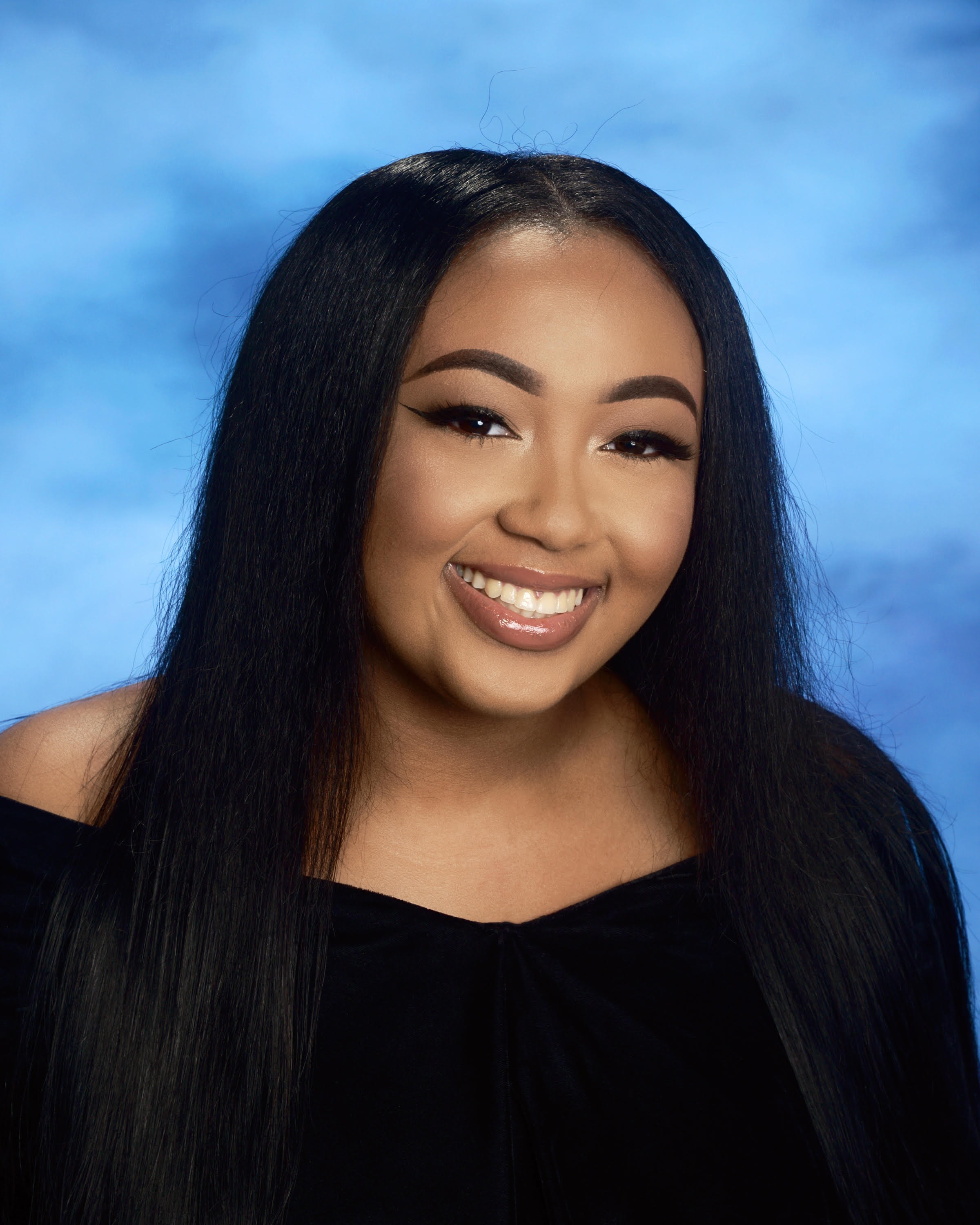
BIO
Greetings! I am Carina Edwards, a first-year Clinical Professions Major at Florida State University. Throughout my education in the Broward County Public School System, i was presented with many opportunities to succeed, and as an individual with pertinent interests in research, i knew that it would play an integral role in my college experience. Being multi-faceted has been a blessing and a curse, because i tend to have several interests. Even though i am pursuing a career in medicine, i have always had a passion for environmental science and ecology. Participating in the Undergraduate Research Opportunity Program has been a tremendous experience and it has allowed me the chance to participate in a research atmosphere.
Use of Very High Resolution Satellite Imagery for Sampling Carnegia Gigantea (Magnoliopsida: Cactaceae
Authors: Carina Edwards, Luis Aguirre-LopezStudent Major: Pre-Clinical Professions
Mentor: Luis Aguirre-Lopez
Mentor's Department: Geography Mentor's College: Florida State University Co-Presenters: Ayyan Hussain
Abstract
Saguaro is a species of cacti specific to southwest Arizona and Sonora, Mexico. Population studies on the saguaro cactus (Carnegiea gigantea) have been limited to small plots of land, due to the harsh climate of the area, therefore large areas of saguaro have not been studied. We used high-resolution satellite images and a Geographic Information System (e.g. QGIS) to identify saguaro and their shadows in a large area. We used a grid to systematize the search and facilitate the replication of sampling in subsequent years. In order to mark the individuals, we obtained several geo-referenced polygon layers where different rectangles allow us to identify the shadows and the individuals. These layers will be used to train a deep-learning algorithm which is useful to automatically identify saguaros from satellite image data. The automatic identification of biodiversity will be essential to keep public online databases up to date.
Keywords: Saguaro, QGIS, satellite, geography department, imaging
22nd annual Undergraduate Research Symposium
Sophia Saadati Poster Session 7: 3:30 - 4:15/Poster #26
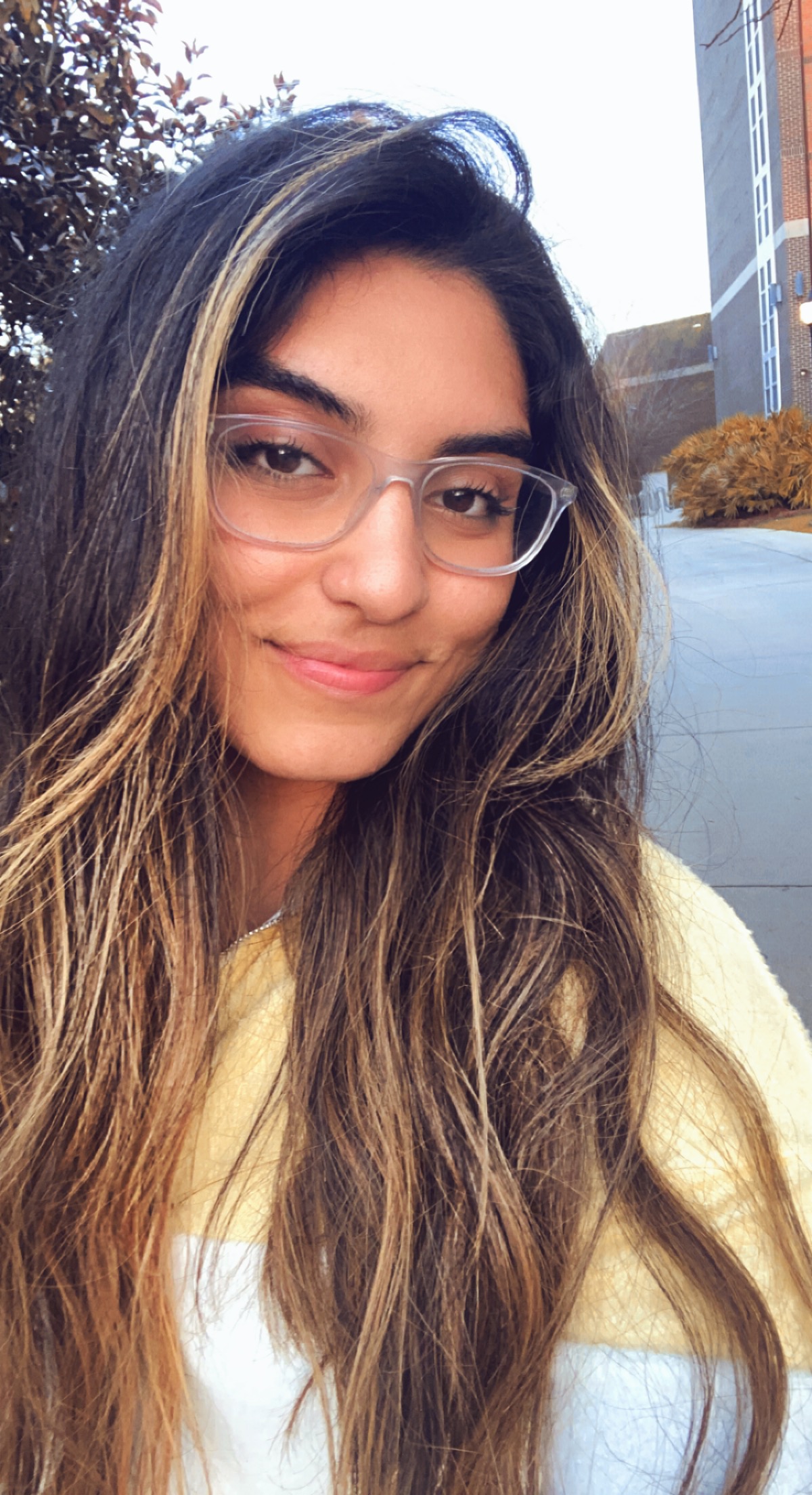
BIO
Hello,
My name is Sophia Saadati, and I am a second-year student at Florida State University. I am currently majoring in biological sciences and am following the pre-dental track, hoping to pursue a career as an orthodontist in the future. I was originally born in Tehran, Iran, and am now living in the City of West Palm Beach. As of now, I am living in Tallahassee for school.
Nutrient Intake Association with Lipid Profiles, Renal Function, and BMI in Overweight and Obese Subjects with Type 2 Diabetes Mellitus
Authors: Sophia Saadati, Dr. Neda S. AkhavanStudent Major: Biological Sciences
Mentor: Dr. Neda S. Akhavan
Mentor's Department: Department of Human Sciences Mentor's College: Florida State University Co-Presenters: Lily Childers, and Andres Gancedo
Abstract
The incidence of type 2 diabetes mellitus (T2D) continues to increase in the United States (U.S.), and is a major contributor of morbidity and mortality due to its increased associated risk of cardiovascular disease. Additionally, treatment of T2D and associated complications create a large economic burden. Disturbances in lipid metabolism and renal function contributing to diabetic dyslipidemia and kidney disease can occur years prior to the development T2D and contributes to further adverse outcomes observed within this population. Diet plays an important role in the prevention and treatment of T2D, with particular emphasis placed on diet quality (e.g. rich in fiber, low in saturated fat) and overall intake (meeting essential macro- and micronutrients). Therefore, the objective of this study was to examine the relationship between dietary intake on lipid profiles, kidney function, and anthropometrics in overweight and obese men and women with T2D. Twenty overweight and obese (BMI 25-40 kg/m²) men and postmenopausal women between the ages of 45-80 years participated in this study. Three-day food records were used to assess dietary intake (Food Processor Software; ESHA Research, Salem, OR); the Piccolo Xpress Clinical Chemistry Analyzer was used to assess lipid profiles (LDL, HDL, CHOL, VLDL, TRIG) and renal function (ALB, BUN, Na+, Cl- Ca, CRE, GLU, PHOS); and anthropometrics were assessed from participants’ height, weight, waist, and hip circumferences. Pearson correlation coefficient was used for overall associations of all outcome variables, with significance accepted at (P≤0.05).
Keywords: Potato Consumption, Lipid Profiles, Type 2 Diabetes
22nd annual Undergraduate Research Symposium
Jesus Avila Poster Session 5: 1:30 - 2:15/Poster #16
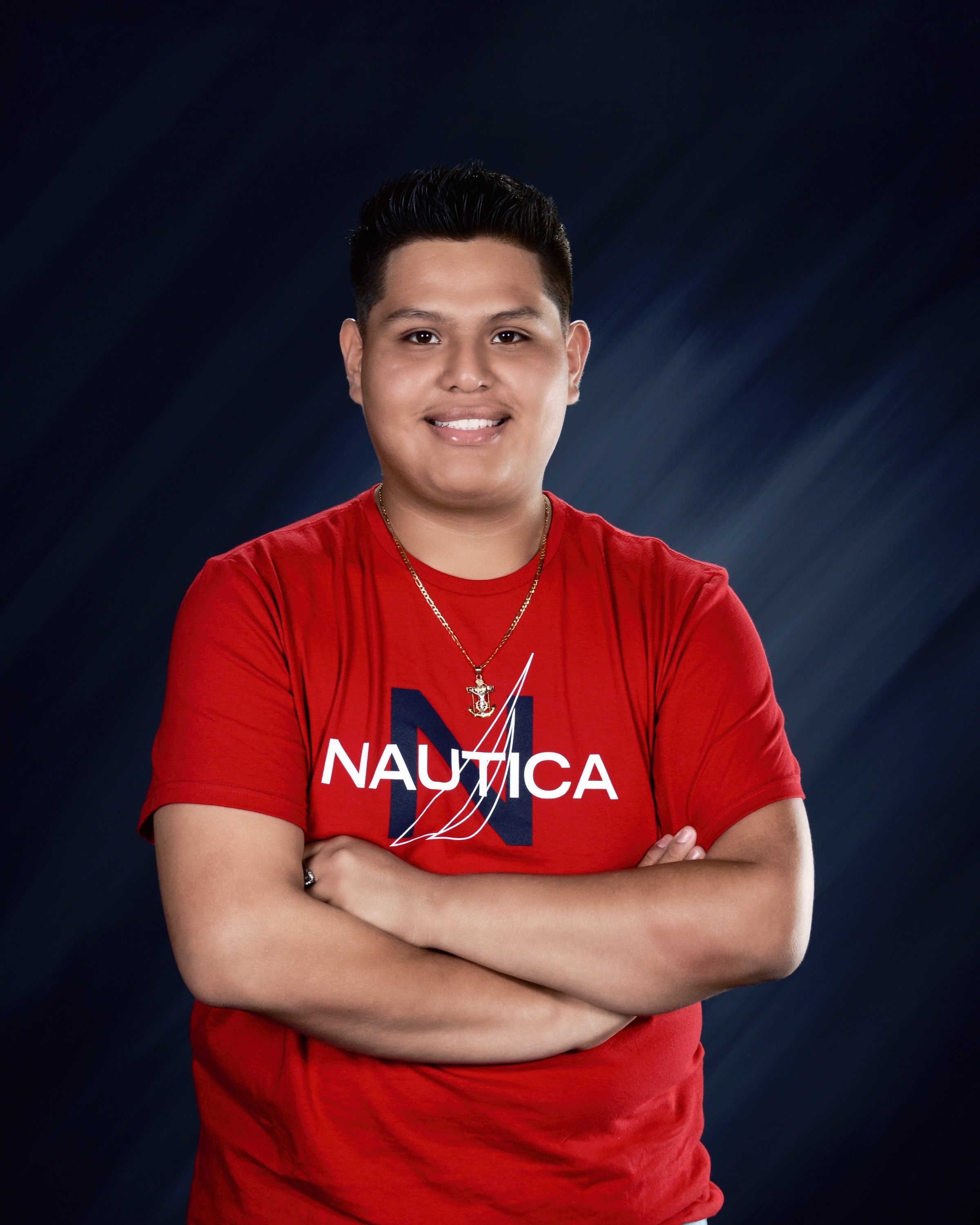
BIO
Jesus Avila is from Lake Worth, FL and a second-year undergraduate at Florida State University. Jesus has expanded his research interests in many fields such as in neuroscience and public health. To be more specific, Jesus is interested in helping communities of color in accessing medical attention and educating them on illnesses that can be prevented. Therefore, Jesus hopes on going to medical school after his undergraduate career to become a doctor that helps underserved communities of color.
Effects of Sleep Fragmentation on Alcohol Response in Drosophila melanogaster
Authors: Jesus Avila, Dr. Lisa LyonsStudent Major: Biological Sciences
Mentor: Dr. Lisa Lyons
Mentor's Department: Department of Biological Sciences Mentor's College: College of Arts and Sciences Co-Presenters: Alissa Kalyan and Tomas Vasquez
Abstract
It is estimated that 50 to 70 million Americans suffer from sleep disturbances and circadian disorders, affecting everyday functioning and increasing the risk for drug abuse, cancers, metabolic disorders, and other diseases. Previous research has found an association between increased incidents of alcohol abuse and individuals who experience regular circadian rhythm or sleep disturbance, such as shift workers. Gaining a deeper understanding of the effect of circadian rhythm disruption on drug tolerance and recovery is a crucial first step in tackling the issue of increased alcohol toxicity and abuse in sleep fragmented populations. In this study, we investigated how sleep fragmentation affected alcohol neurobiology using Drosophila melanogaster as a model. The high degree of molecular conservation across species and the stereotypical alcohol behaviors from drosophila to humans make drosophila an ideal model organism for studying sleep and alcohol response. We studied two sleep fragmentation paradigms over four days of fragmentation in young adult flies (3-7 days old) to investigate alcohol sedation responses, alcohol toxicity, and the alcohol tolerance. Preliminary results suggest an association between increased sleep fragmentation and faster sedation responses, as well as increased mortality rates. Studies are ongoing, and the anticipated results will provide a foundation for future studies investigating the molecular pathways through which sleep disturbances affect alcohol responses.
Keywords: Drosophila, Alcohol Tolerance, and Circadian Rhythm
22nd annual Undergraduate Research Symposium
Brandon Vargas-Torres Poster Session 5: 1:30-2:15/Poster #17
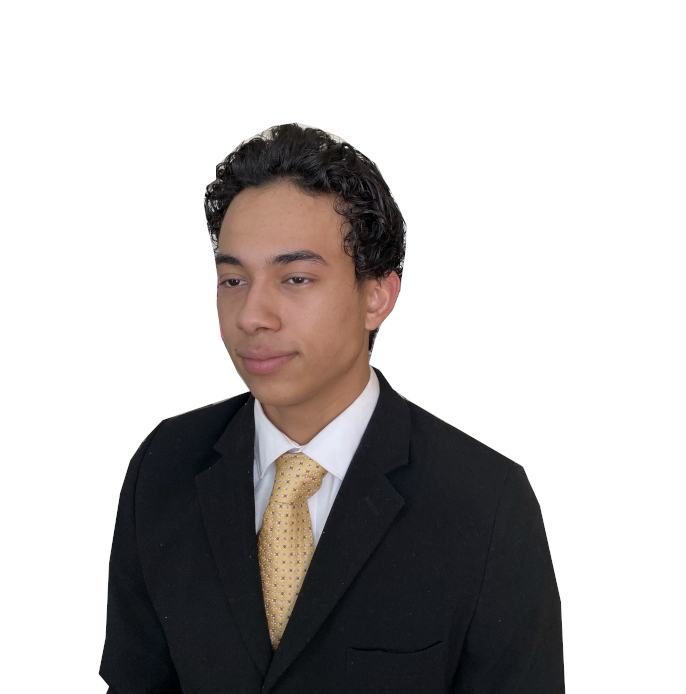
BIO
Being from Chapel Hill North Carolina allowed me to see firsthand, some of the best hospitals in the country. This acted to further to emphasize the passion I have in the field of medicine which was instilled in me from a young age. When I graduated it was very clear to me that the Medical Field was my ultimate goal. When my school opened a Biomedical Science program I dove in headfirst and that has persisted in this research which I believe can have an incredible impact on the medical field. I am passionate about your field of research because I believe it can find answers to things that are unknown, filling gaps in knowledge and changing the way that healthcare professionals work. As a result, I believe that any field of research offers a unique opportunity to have a phenomenal impact in this respective discipline.
Non-Newtonian fluid Interactions with Complex micro-swimmers
Authors: Brandon Vargas-Torres, Mark SussmanStudent Major: Interdisciplinary Medical Science: Health Management
Mentor: Mark Sussman
Mentor's Department: Department of Mathematics Mentor's College: Florida State University Co-Presenters:
Abstract
Stochastic Eulerian Lagrangian Method refers to the interaction between Eulerian background fluid motion and embedded micro-swimmers. Stochastic Eulerian refers to the fluctuating eulerian hydrodynamics and lagrangian refers to the interaction between the motion of the fluid with the corresponding motion of micro-swimmers on the fluid. This research focuses on preliminary research regarding the Eulerian Lagrangian interaction of a non-newtonian fluid motion with embedded micro-swimmers and more realistic geometry and motion. Previous research in this field (CITE) assumed Newtonian fluids with circular two dimensional or simple geometry three dimensional microswimmers. These vary in applications and methodology
The current simulation and modeling system for non-newtonian droplets through microchannels is inadequate in realistically modeling subtleties in which outside forces such as meshless particles affect underlying flow. Microfluidic devices in conjunction with numerical simulations may be used to enable realistic modeling of multiphase flows. This has a wide range of applications including areas where visco-elastic drops can be modeled more accurately with the new numerical method of general non-newtonian droplets such as blood flow.
Keywords: Mathematics, Physics, Biomedical
22nd annual Undergraduate Research Symposium
Natalija Nikolic Poster Session 2: 10:00-10:45/Poster #45
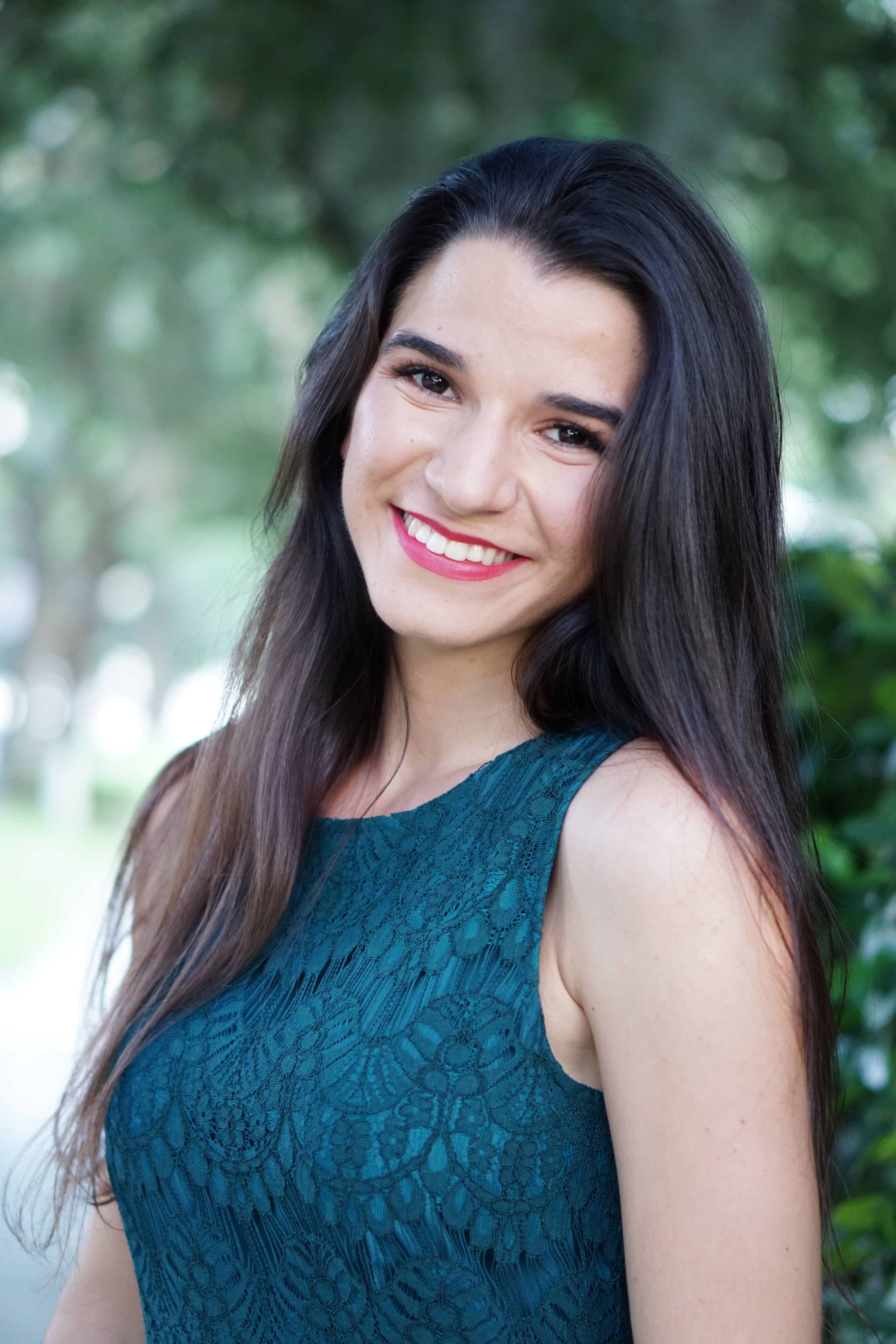
BIO
Natalija Nikolić is a Serbian first-generation student. She is a 2nd-year undergraduate at the FAMU-FSU College of Engineering, where she is pursuing a Bachelor of Science in Civil Engineering and minors in both Chinese and Astrophysics. She plans to continue her Physics-related research and expand into Structural Engineering. Upon graduation, she will go to graduate school while working towards her Professional Engineering license.
Testing a Cuprate High Temperature Superconductor
Authors: Natalija Nikolic, Dr. Dragana PopovićStudent Major: Civil Engineering
Mentor: Dr. Dragana Popović
Mentor's Department: Condensed Matter Physics Mentor's College: National High Magnetic Field Laboratory Co-Presenters:
Abstract
Through our research, we’ve gained a deeper understanding of cuprate materials, which are loosely defined as materials containing anionic copper complexes. Cuprates are known for their high-temperature superconductivity. In this project, we focused on a Fe-LSCO Sr 0.16 Sample. To test the resistance of the sample, we attach voltage and current contacts with the help of a Silver Paste. After the contacts are secured on the sample, we place it in extreme low-temperature cryogenic tanks, which can be described as large thermoses with liquid helium or liquid nitrogen inside to keep it cool. The sample is placed in the tank with a probe and its resistance is measured through a resistance bridge. The results show a point of zero resistance when the sample reaches a certain temperature; this is when it becomes superconductive.
Keywords: Superconductor, Cuprate, Resistance
22nd annual Undergraduate Research Symposium
Austin Pauley Poster Session 5: 1:30-2:15/Poster #61
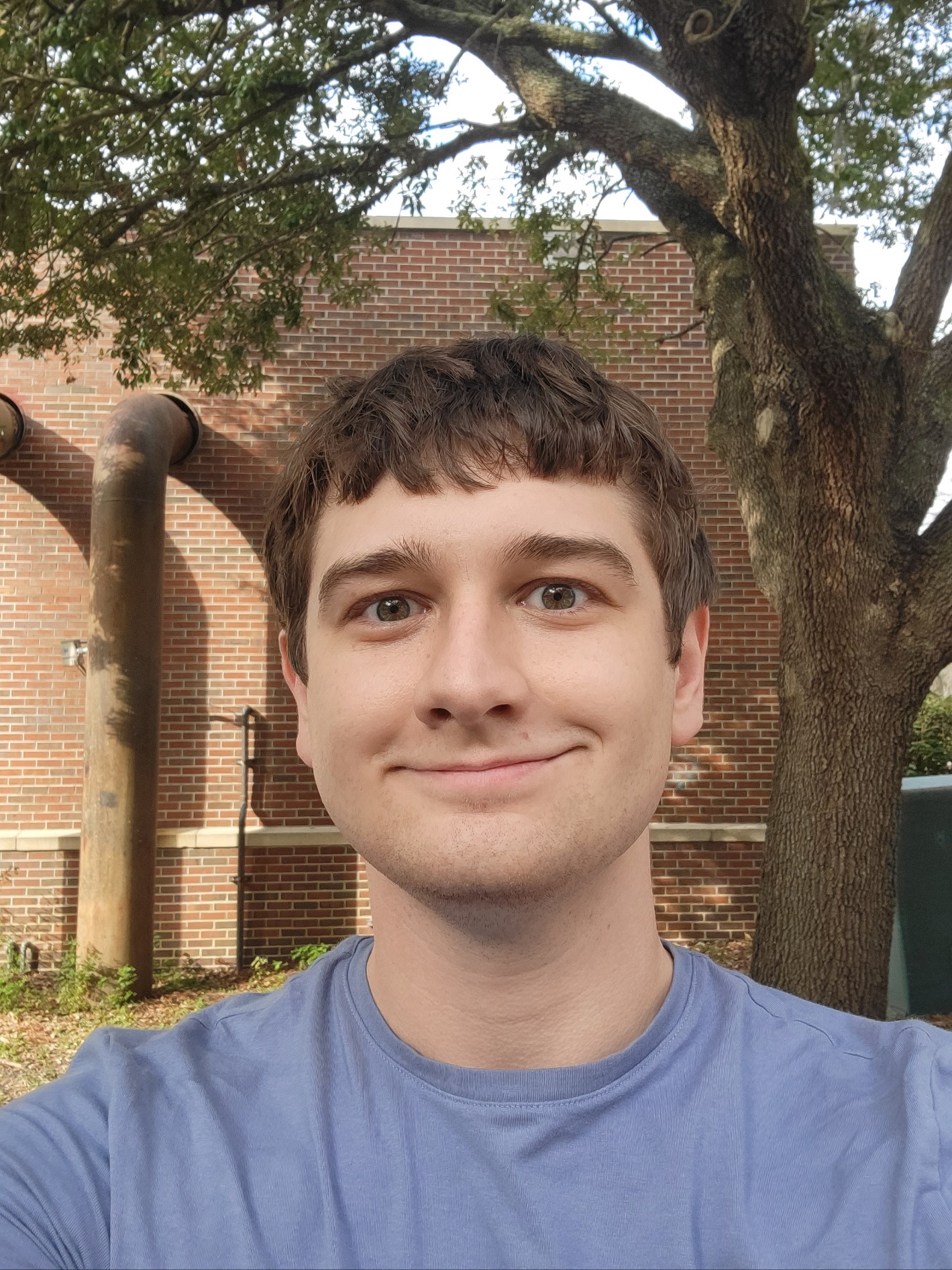
BIO
Austin Pauley is a senior studying Biological Sciences. He is originally from Bonifay, FL, a small town in the Florida Panhandle. Austin is an active member of the FSU community where he participated in the Marching Chiefs for three years during his freshman, sophomore, and senior years. He has also participated in multiple service roles during his time at Florida State University. Austin is a volunteer emergency medical responder on campus and has served as both an educator and leader within the Medical Response Unit. He was also involved in several local service opportunities through the FSU Center for Leadership and Social Change in addition to being a volunteer educator for local EMT students. Austin serves as an EMT providing medical care and aid to several local communities. Within the Department of Neuroscience, Austin is involved in research involving olfactory perception, machine learning, and computer vision. His current research interests include olfactory perception, olfactory-guided behavior, behavioral modification, and machine learning.
DeepLabCut as a tool to investigate olfactory-guided behaviors in mice
Authors: Austin Pauley, Adam DewanStudent Major: Biological Sciences
Mentor: Adam Dewan
Mentor's Department: Department of Neuroscience Mentor's College: College of Arts and Sciences Co-Presenters:
Abstract
Investigating aspects of olfactory perception, such as odor valence, typically involves the presentation of one or multiple odors to a freely-moving animal and examining the resultant behavior. This process can be extremely time consuming, as the animal must be observed by a human and manually assessed. DeepLabCut (DLC) is a markerless pose-estimation software package that is free, open-source, and accurate at spatially tracking laboratory animals. DLC utilizes machine learning and convolutional neural networks to train a model to recognize a user-defined set of points on laboratory animals. The model then can be utilized to process novel video recordings and output a list of coordinates tracking the position of the animal over time. This positional data can then be introduced into other analysis pipelines to correlate specific behaviors with odor presentation. Our goal is to integrate this technology with our established methods to investigate olfactory perception in a high-throughput manner. Individual mice are placed in a large chamber with specialized odor and vacuum ports. Odor is delivered via a flow dilution olfactometer and the resultant behaviors are video recorded and processed utilizing DLC to output coordinates for positioning of specific body parts throughout the experiment. We aim to utilize the spatial coordinates DLC produces to determine how odor-guided responses are influenced by the genetic deletion of specific olfactory receptors, correlated with neural activity in olfactory brain regions, and altered by the inactivation of olfactory cortical regions.
Keywords: DeepLabCut Behavior Neuroscience
22nd annual Undergraduate Research Symposium
Catherine Rodriguez Poster Session 2: 10:00-10:45/Poster #41
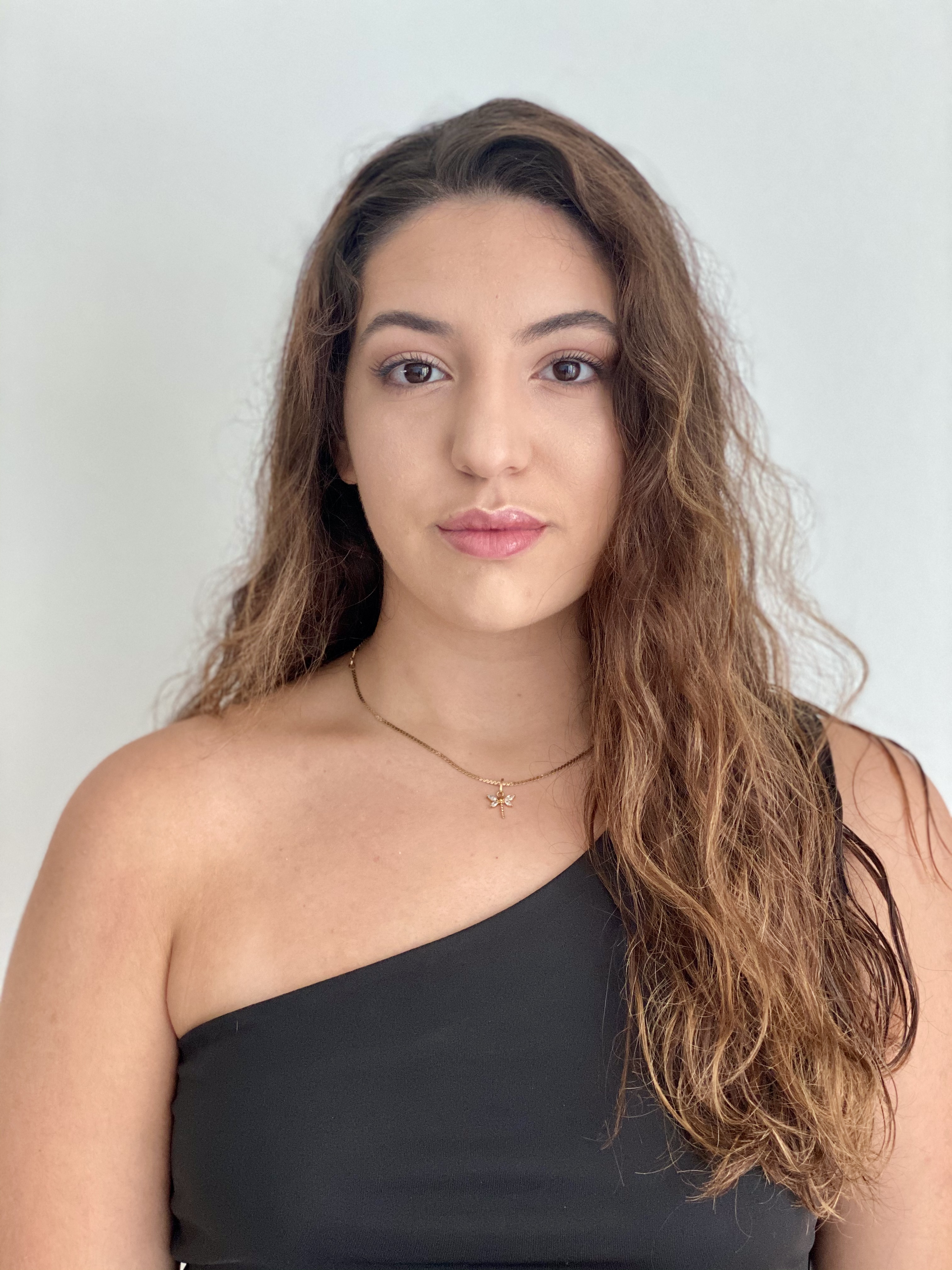
BIO
My hometown is Miami, FL, though I was born in Cuba and raised in Chile. Some of my interests include painting on canvases and practicing self-care.
Additionally, I have an appreciation for the arts; I enjoy both engaging with various art forms and being an observer. This past academic year, I started participating in research through the UROP program. This experience has not only introduced me to excellent mentors, but it has also sparked an interest in science. I now feel more invested in the pursuit of knowledge. My main career objective is to attend medical school and become a doctor.
Analyzing Input and Output Neurons in the Olfactory Bulb of Mice
Authors: Catherine Rodriguez, Dr. Douglas StoraceStudent Major: Behavioral Neuroscience
Mentor: Dr. Douglas Storace
Mentor's Department: Biological Science Mentor's College: Florida State University Co-Presenters: None
Abstract
In Dr. Storace’s lab, we aim to broaden our understanding of the olfactory bulb in transgenic mice. The objective of Dr. Storace’s lab is to determine the olfactory bulb’s role in sensory processing and olfactory perception. Working alongside my mentors, Dr. Douglas Storace and Dr. Narayan Subramanian, I learned that the structure of the olfactory bulb consists of input neurons transmitting sensory information to output neurons, connecting on glomeruli. Throughout these two semesters, my goal has been to better understand the bulb circuitry on a cellular level, by successfully imaging a coronal section of the olfactory bulb, by which I could determine its different components. To fulfill my tasks, I used harvested brains from transgenic mice that have been genetically engineered to express distinctive genes that code for fluorescent proteins found in neurons. To retrieve the coronal sections, I sliced the brain using a vibratome. Once they were cut, I stained them with DAPI (a DNA staining gel) and covered them with a coverslip, leaving them overnight in the lab’s fridge to solidify the gel. When it was ready to be studied, I observed them under a fluorescent microscope and documented my findings using the microscope’s computer program and ImageJ. The coronal sections were not properly imaged. However, we used other examples to distinguish between the input neurons (red fluorescent) and the output neurons (green fluorescent). After having conducted the study, I feel compelled to further explore the neuroscience field.
Keywords: Neuroscience, olfactory bulb, neurons, fluorescent microscopy

